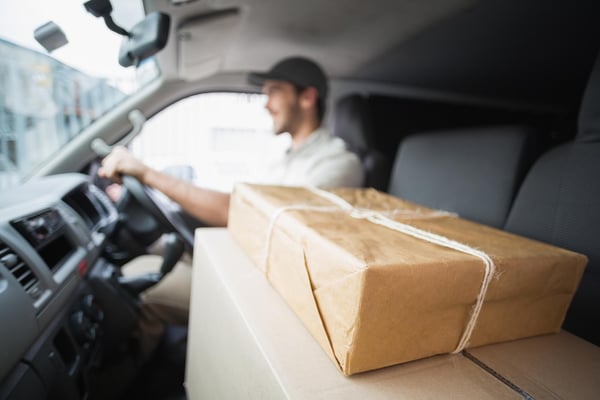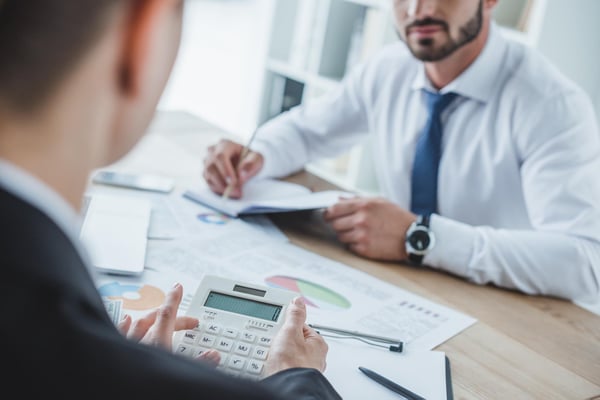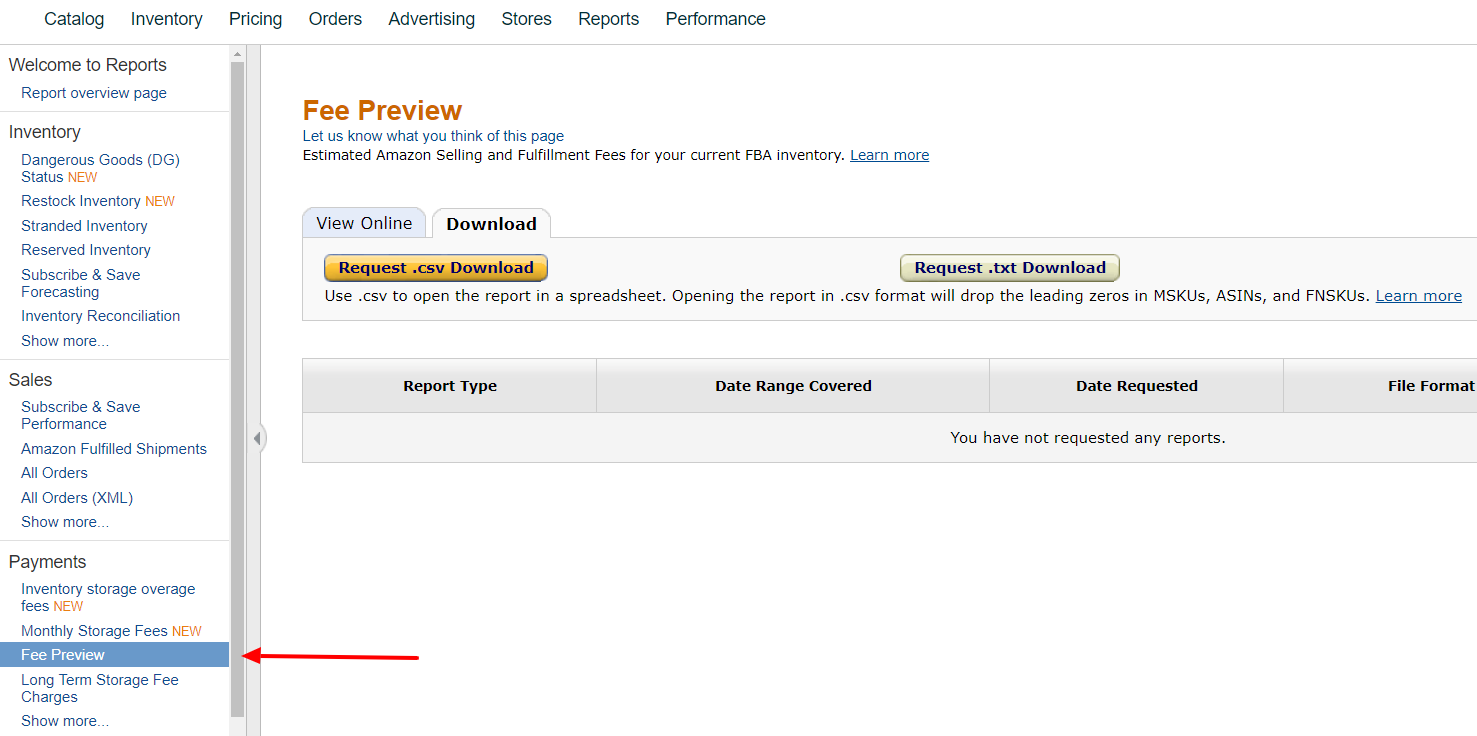The New And Updated 2022 FBA Fees Calculator Is Available HERE.
The oft-cited stat on Amazon is that more of the marketplace’s sales come from third-party (3P) sellers rather than Amazon’s first-party (1P) retail itself. Recent data places this number at roughly a 58% to 42% split between 3P and 1P sales.
For all the talk of Amazon’s massive scale in aggregate, it’s equally important to understand the breadth of sellers on the marketplace, spanning from the garage-based retail arbitrager to the enterprise-level brand. A stat that better illustrates the longtail growth of Amazon is that there are over 25,000 individual sellers that have yearly revenues of over $1,000,000, and a total of 200,000 sellers at the $100,000 yearly mark or higher.
This alone suggests that Amazon as platform has allowed a proliferation of meaningfully sized businesses at a speed that even Bezos consigns is “kicking our first-party butt.” The fact that grabs less headlines is that these businesses incur a real dollars-and-cents cost when sharecropping on Amazon’s channel. Thus, there are two sides to all the conveniences and services Amazon provides brands—on the one hand, easily accessible scale. On the other—margin erosion at every turn.

But first, the easily accessible scale. In days of yore, retail (and eventually by extension, e-commerce) had two options to grow their business:
- Develop teams to handle it in-house
- Outsource it to specialized vendors in bilateral agreements
Thus, you had brands and retailers investing in every touch point, from the supply chain all the way to customer retention. To achieve differentiation, brands would need everything from owned warehouses, to robust SEO teams, to individualized loyalty programs. Increasingly though, brands have a third option for growth: “Let Amazon handle it.”
Don’t want to mess with reverse logistics? Amazon. Lackluster user experience on your direct site? No problem; all of your customers already know how to search on Amazon. Want someone to take six-sided photographs of your products? Yep, Amazon will do that too.
And while the appeal of this easily outsourced scale is immediate (just ask the 200,000+ sellers), the accompanying costs and fees are less apparent to the uninitiated seller.
This is a key thing that we do at Bobsled: help our brands navigate the cost/benefit of the seemingly endless opportunities Amazon affords.
In this post, we’ve aggregated some of the most common fees you’ll face by deciding to leverage Amazon’s services, focusing particularly on if you use their fulfillment network. Best of all, we’ve packaged the three most common fees into a handy calculator that will spit out item-level margin analysis after you provide some minimal product information.
But first, let’s tackle an important question: “How do I sell on Amazon, and what will it run me?”
What You’ll Pay to Sell on Amazon
While there are numerous small permutations on how you as a brand sell on Amazon, there are essentially two main formats:
- Selling as a third-party (“3P”) seller on the Amazon marketplace via Seller Central
- Selling via a wholesale model to Amazon Retail, which then turns around and sells that product as a first party (“1P”) on the marketplace
We have other content that covers the operational and strategic differences of the above two options in depth, so for our purposes, we’ll just focus on the cost structure for these two methods.
Selling as a Third Party via a Seller Account
As a third-party seller, the most common fees you’ll encounter are referral fees, fulfillment fees, and storage fees.
Referral fees are inescapable. It doesn’t matter if you handle all other elements (fulfillment, customer service, prep/packaging, etc.) on your own or with non-Amazon vendors, all third-party sellers must pay the referral fee on the sale of the product.
Think of this as the commission Amazon charges you for logging a sale on their platform. For most products, this is a flat 15% of the price the customer pays. However, depending on the product category, this can be as low as 3% (for a $1,500+ watch) or as high as 96% (for protection plans and warranties).
So any time you’re selling a product, it’s a good idea to check the referral fee rate you should be paying based on Amazon’s details here (Seller Central login required). Or even better, use our fee calculator featured later in this article to do the work for you.
Note that referral fees are charged “on the total sales price, excluding any taxes calculated through Amazon tax calculation services. The total sales price is the total amount paid by the buyer, including the item price and any delivery or gift wrapping charges.”
So if you have a list price of $100, a sale price of $80, and charge $10 for shipping, you’ll pay the category-mandated referral fee on the $90 (sale price + shipping) that the buyer ultimately spends on the purchase.
Fulfillment fees. Using Amazon’s fulfillment network benefits you with immediate Prime shipping (and the accompanying uptick in sales), nearly unlimited product storage, and responsive customer service. However, as soon as you decide to use Fulfillment by Amazon (FBA) rather than Fulfillment by Merchant (FBM), be prepared to absorb some more costs.
Typically, the biggest of these is the fulfillment fee to pick, pack, and ship the product to the end consumer via FBA. To assess this fee, Amazon measures the size of your fully packaged product, assigns it to one of their predetermined sizing categories based on the resulting package weight and dimensions, and then charges a flat rate based on that sizing tier. You can find more information on this process in our fees guide here.

Storage fees. Not only does Amazon charge the cost of picking, packing, and shipping your product to the end consumer if you’re using FBA, they also charge you for the privilege of having your product sit on their warehouse shelves.
Assuming you’re managing your inventory appropriately, this should be a relatively small portion of your fees (when compared to referral fees and FBA fulfillment fees), but it’s important to calculate nonetheless. This becomes especially true if you have large products with low inventory turns.
Amazon measures your total volume in storage, computes a daily average volume for the month, and then assesses a fee per cubic foot of storage based on that volume. Fees range from as low as $0.48/cubic foot to as high as $2.40 during peak holiday times. If you’ve mishandled your inventory forecasting and managed to have inventory sitting in warehouses for over a year, you’ll get slapped with a $6.90/cubic foot long term storage fee.
There are dozens of other fees outside of the above three that you can encounter as an FBA seller (again, covered more in depth in our FBA fee-specific content), but these are generally the ones you can expect to pay if selling via FBA as third-party seller.
Selling to Amazon Retail via a Vendor Account
Having your product sold via Amazon as the first-party seller (1P) means several costs incurred for selling on Amazon. These are generally the following.
Margin difference between the retail price and wholesale price. While technically not a “fee,” this is gross revenue that you otherwise would’ve received if selling on Amazon as a third party rather than selling the product to Amazon via wholesale purchase orders. These costs are generally negotiated annually, and we’ve got an entire article dedicated to managing this process effectively.
Marketing Development Funds (MDF), COOP Fees, Damage Allowances. These are all additional fees that Amazon charges as a percentage of the accepted wholesale costs of the products you sell to Amazon.
Amazon states that these fees cover the various costs Amazon incurs for maintaining their marketplace platform, running marketing campaigns, and managing all customer service and fulfillment for the products they buy. There’s some variance to these based on your negotiated rate with the Amazon vendor team, but they can easily be 15%+ for some brands selling to Amazon retail.
Chargebacks. This is the catch-all bucket for various fees Amazon assesses for not complying with their stringent list of operational requirements. These costs are deducted from your payments for previous purchase orders and can quickly add up if not frequently monitored and contested.
So those are the most common costs for selling on Amazon regardless of the method. But for those of you who are looking to launch on Amazon—or perhaps you’re concerned about the looming shadow over Amazon vendors—the question remains: “What will fees look like for my products specifically?”
Methods to Calculate Your Amazon Fees
The best method to calculate your Amazon fees depends on whether the product is already live on Amazon, how many products you need to analyze, and whether you’re selling that product already in your Seller Central account. We’ll ignore any vendor fee calculations, as these are negotiated prices unique to each vendor relationship rather than something that’s standard across vendor accounts.

Amazon Revenue Calculator
Search Amazon’s catalog for a product by name, UPC, or ASIN, and get an immediate estimate for the product’s revenue and margin potential given standard FBA costs.
- Pros: streamlined visual interface, breakeven analysis based on sales growth estimates of selling FBA versus FBM, uses existing product data without you needing to input it directly
- Cons: the product must already exist in Amazon’s catalog, only accepts a single product at a time
Payments Report
If you’re already a seller and actively shipping orders, you can always view your fees for an individual order by going to Reports → Payments → Transaction View and then entering the Order ID in the “Find a transaction” search box.
This will show you the total Amazon fees for that order. Clicking the total amount will take you to an itemized list of each fee for the order.

Above: Screenshot of Transaction Details on Amazon
- Pros: the payments report is Amazon’s “source of truth” for the actual fees and revenue accrued for a given sale.
- Cons: cumbersome to do for more than a few orders, requires existing orders of the product to show the resulting fees
Fee Preview Report
Again, this option is only available to sellers already set up in Seller Central, but you can pull a report that estimates referral and fulfillment fees for your entire existing catalog by going to Reports → Fulfillment → Fee Preview.

Above: Screenshot of Fee Preview on Amazon
This will generate a downloadable spreadsheet with all products and their respective projected per-unit fees. This is the same information seen in the “Fee Preview” column on the Manage Inventory screen, but just in a downloadable format.
- Pros: quick and easily accessible snapshot of fees for products, able to see fees for multiple products simultaneously, itemizes fees based on type (referral versus fulfillment)
- Cons: requires that the product has all information already entered into Seller Central, only takes into account list price and product dimensions and therefore won’t factor in any impact of promotions into the fee preview, often shows fees that are different from the actual fee charged when the product sells
Our Automated Fee Calculator
We frequently find ourselves needing to audit massive lists of products that haven’t been added to Amazon’s catalog yet. We also regularly audit our client’s catalogs to ensure the correct fees are being assessed.
To do this, we’ve built out our very own bulk fee calculator. You can download (for free!) the exact same powerful tool that we use on our sister site, The Marketplace Institute. By entering your product category, weight, dimensions, and list price, you can calculate the resulting fees for hundreds of products simultaneously with precise accuracy.
- Pros: the only tool available that allows for bulk fee auditing for products not yet in Amazon’s catalog
- Cons: only takes into account standard FBA fees (referral, fulfillment, and monthly storage). Doesn’t take into account less common fees like Small and Light program, long term storage, removal or returns, prep and packaging fees, etc. Though to be fair, neither do any of the other tools above that Amazon provides for calculating fees.
Get Bobsled's Automated Product Fee Calculator to calculate the resulting fees for hundreds of products simultaneously with precise accuracy.
Smart brands know that checking your fees isn’t a one-and-done process. Amazon can frequently change your product category or dimensions, causing you to pay an incorrect (and often higher) fee for a product that had already been selling at a different, lower fee for months.
Amazon affords you some recourse to remedy this (see our guide to this process here), but it’s best to try and catch these instances early via frequent fee monitoring. You’ll thank yourself when you’ve successfully avoided a lot of casework asking for reimbursements down the road.
The Costs of Amazon Success: More Than Just Fees
While the various direct fees that Amazon charges span a wide gamut of services, they represent just one portion of your unit-level costs if you’re scaling a brand on Amazon.
Advertising has become an increasingly important element for brands that want to compete on Amazon’s marketplace. Promotions play a critical role for capitalizing on seasonal shopping behavior. And then there are all the costs that take place outside of Amazon’s ecosystem, from your cost to produce the product, costs to ship said product to Amazon or the end customer, R&D costs, compliance testing…the list goes on.
Given the complexities of operating a successful brand across multiple channels and marketplaces, we’re here to help you navigate Amazon so you can minimize fees, maximize profitability, and focus on growing your brand. If that sounds like a good fit for your brand, contact us for a chat.
Tagged: Amazon Account Management, Brand Protection & Customer Service
.png)


